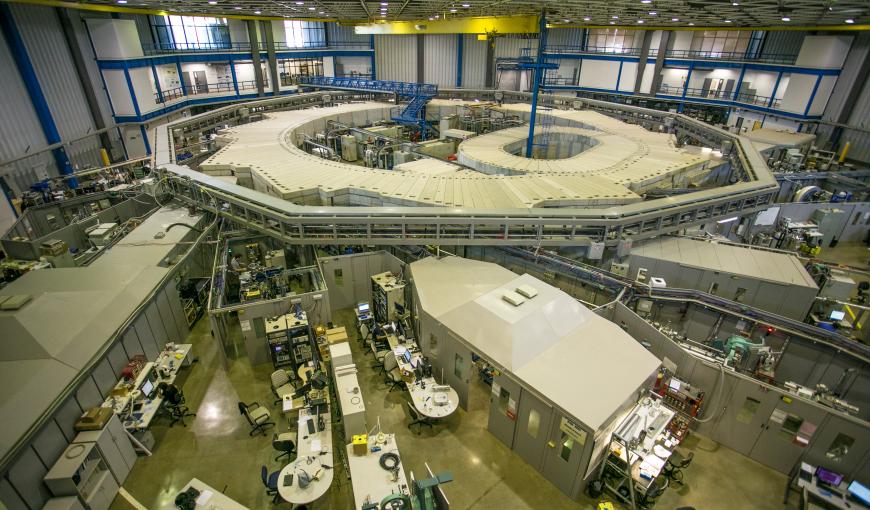Brazil will have one of the world's brightest synchrotron light sources
Synchrotron light is a type of broad-spectrum electromagnetic radiation, between infrared and X-ray, of high-intensity and high-brightness, that works as a microscope capable of investigating the structure of matter and viewing its atoms and molecules. Generated by the acceleration of electrons at a speed close to that of light, it can be applied in several areas of knowledge and has been essential for the production of new drugs, fertilizers, cell analysis, the study of different types of soil and new sources of energy, even for the withdrawal of oil in the layers of the pre-salt.
Brazil occupies a prominent position in this area, being the only Latin American country to have such a source in the National Laboratory for Synchrotron Light (LNLS, in Portuguese), which is part of the Brazilian Center for Research in Energy and Materials (CNPEM), in the city of Campinas (São Paulo) and receives about 1.2 thousand researchers per year. In 2018, the country will have one of the most complex infrastructures in the world for analyzing material properties with the completion of the Sirius project, which will be a new electron accelerator with the brightest of all the equipment in its energy class. This will be the second synchrotron light source to enter the world in the so-called fourth generation, after the inauguration of the MAX IV accelerator, from Sweden in June this year. “To understand the synchrotron light, it is possible to compare a flashlight to a laser pointer. The smaller the area and the angular aperture of the light beam, the brighter it is”, explains LNLS director – José Roque da Silva.
The Sirius project, according to the researcher, will allow more than twice as many lines of light as the current accelerator, with a brightness of more than 1 billion times greater, which will lead to a quantitative and qualitative leap in scientific research that may be conducted. “We understand that Sirius is an extremely relevant project for national science and technology policy, and it also brings challenges in the areas of processing and storing large volumes of data”, says Roque.
In a short time period, still in the design phase, to make simulations of the behavior of the electrons in the accelerator and the propagation of synchrotron light, as well as to develop processes of analysis of 3D images generated by the current tomography line of LNLS, the laboratory needs high-performance connectivity and computational resources found only in the Santos Dumont supercomputer, located at the National Laboratory for Scientific Computing (LNCC) in Petrópolis (RJ), at 400 kilometers away. Thus, the research unit requested the use of the academic network infrastructure to enable a superconnectivity service called High Performance Express Processing (Padex).
This service will enable a high-flow data transfer band, so the project schedule is met by 2018. When Sirius comes into operation, it will bring a change in brightness threshold and will produce high-resolution tomographic images, high-volume tomographic images and large volumes of data, which must be processed and stored in a short time, while the user is conducting the experiment. “We intend to explore partnerships with LNCC and RNP, as a provider of communication among national research centers, due to the strategic position of the Sirius project for national research, to attract Brazilian and foreign scientists and to stimulate the creation of a national storage policy of data”, says the LNSLS director.
Sirius project in numbers
The current electron accelerator in operation in Campinas is composed by a ring of about 30 meters in diameter. On the other hand, the new accelerator designed by Sirius will have a circumference of 518 meters, with energy of 3 GeV (gigaelectron-volts), and can hold up to 40 lines of light, which are the experimental stations where the materials are analyzed. The cost of the project, including civil works, accelerators and 13 lines of light, with up to 70% of its components manufactured in Brazil, will be R$ 1.75 billion. The name was given in honor of the Sirius star, the brightest of the sky sighted at night.
Photo: LNLS
